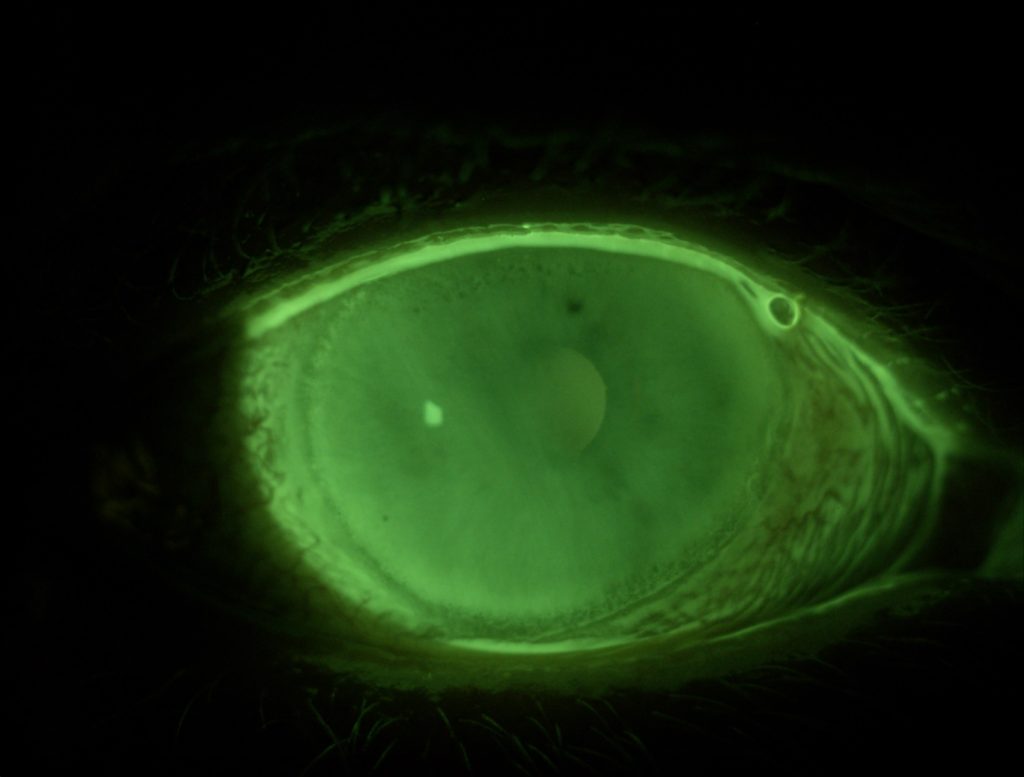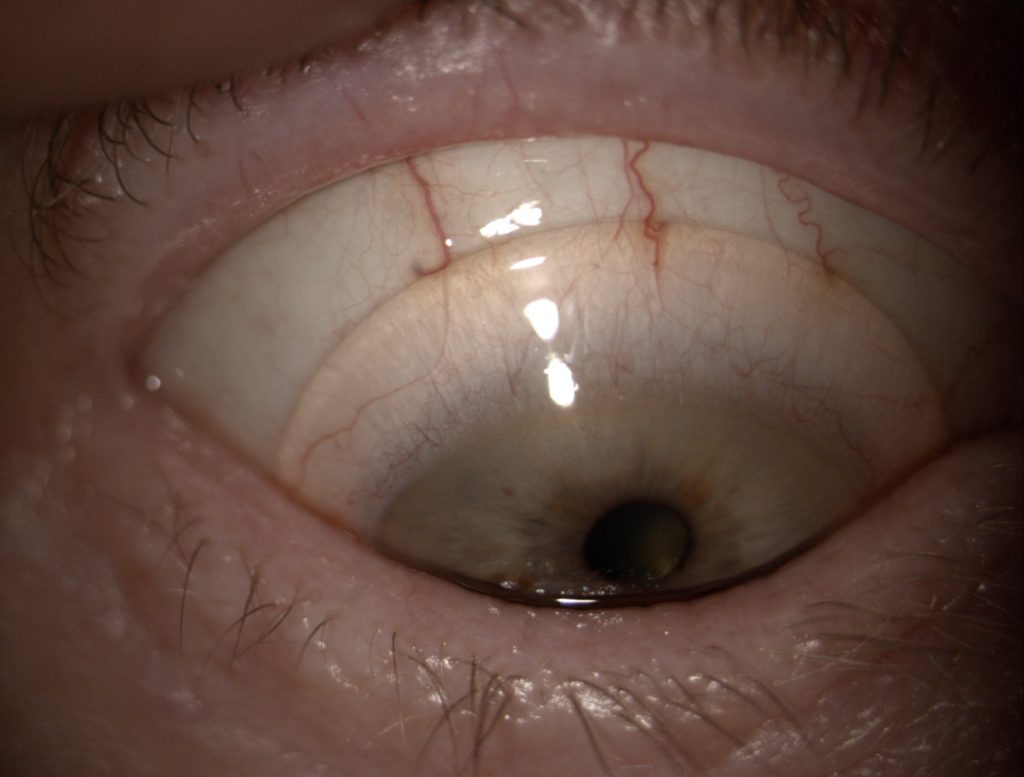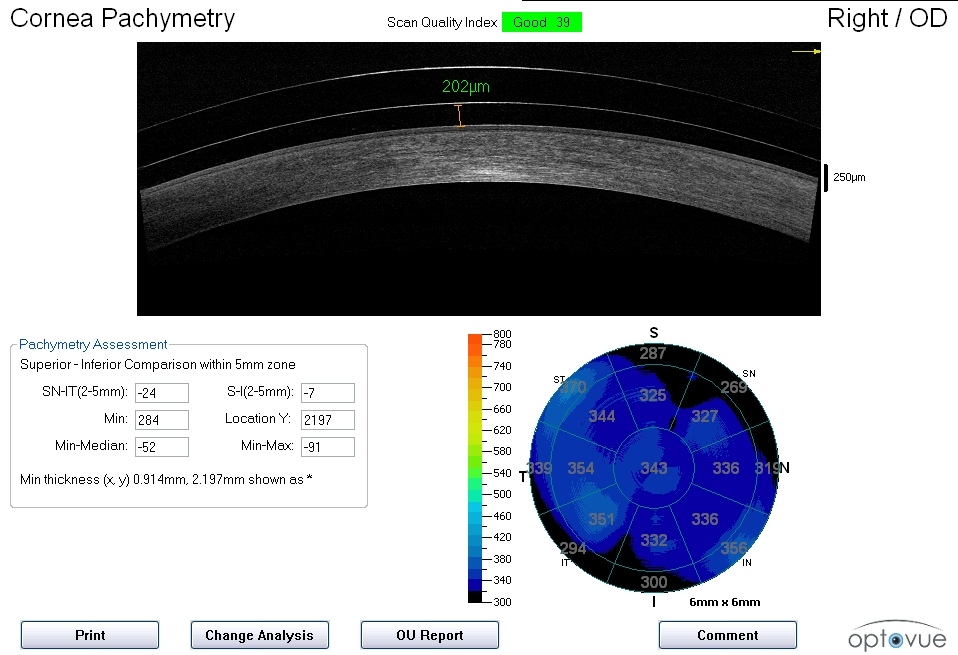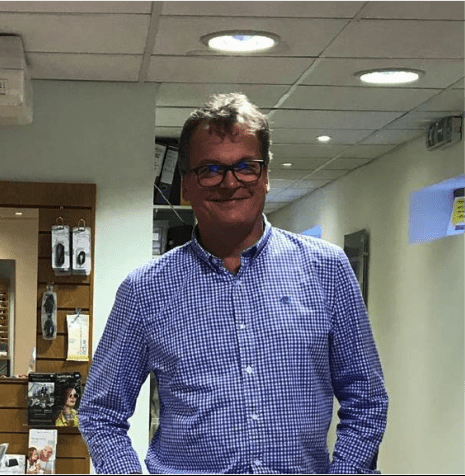Dry Eye and Scleral Lenses in Optimum
By Martin Conway & Mark Darling
Scleral lenses have become a standard option for the correction of keratoconus and other irregular corneal pathologies, however, they can also be a viable therapy in the treatment of dry eye disease.
I describe below a patient seen at Mark Darling’s practice in Northampton. The difference the lenses made to her quality of life was such that she readily agreed to be filmed for this brief case study.
Patient JB, Female, was originally seen for a routine eye examination in April 2002. Eyes were normal with acuities good (R&L 6/5, 20/16). She was slightly hyperopic.
In November 2007, she was seen again following a routine
reminder.
Acuities remained good with no significant change in Rx, but she complained for the first time of “sore eyes”. In the absence of any obvious pathology, she was initially advised to wear her spectacles more, as she was in the habit of using them for TV and reading only.

TBUT – 5 Seconds
By 2012 however, she had been diagnosed with both
hypertension and osteoarthritis and prescribed the necessary medications, both
of which had implications for possible ocular dryness.
Over several visits, although her vision remained stable, she was increasingly complaining of dryness, and in 2013 dry eye treatments were stepped up with lid scrubs and heat compresses added to the current regimen of lubricants.
JB is a full-time carer and found difficulty maintaining a regular regimen of lid scrubs, heat compresses etc., alongside those responsibilities.
By May of 2019, the increasing severity of symptoms prompted another visit and it was decided to fit scleral lenses in an attempt to alleviate the considerable discomfort.

Fitting
JB drives and plays golf LE Dominant. Multifocal toric in RE, LE Distance toric
Lenses: Wave OCT Design from Northern Lenses
Material: Optimum
R 7.66/16.00 Toric Multifocal +2.25/-0.75X100 +2.00 Add 6/5 N5
L 7.66/16.00 Toric +2.00/-0.75X 90 6/5
Modified monovision mainly for golf, driving

At collection, JB said that her eyes felt immediately “cooler”, lenses were dispensed and she was seen for normal follow up visits.
Her reactions to the lenses can be seen on the video below:
Although she will continue to need additional dry eye therapy, the relief of pain was both immediate and ongoing.

Martin Conway has over 40 years’ experience in the contact lens field as a qualified Contact Lens Optician. He is registered with the UK General Optical Council on the Speciality Contact Lens Register. Martin is a fellow of the British Contact Lens Association (FBCLA), and The International Association of Contact Lens Educators (FIACLE). He has served in the Professional Services role as an educator and clinical adviser on behalf of both Sauflon and CIBA, and now acts as Professional Services Consultant for Contamac. Martin has lectured extensively in Europe, Asia, Russia, North and South America and the Middle East.
More articles by Martin Conway:
Salzmann’s Nodular Degeneration

Mark Darling is a graduate of City University, London. He completed his pre-registration year in the Contact Lens Department of Moorfields Hospital in London, and has had his own practice since 1990. Mark has a special interest in speciality lens fitting and assists in clinical trials for Contamac. He also works closely with a local hospital eye department and has built a substantial scleral patient base using designs from many of Contamac’s laboratory partners.
